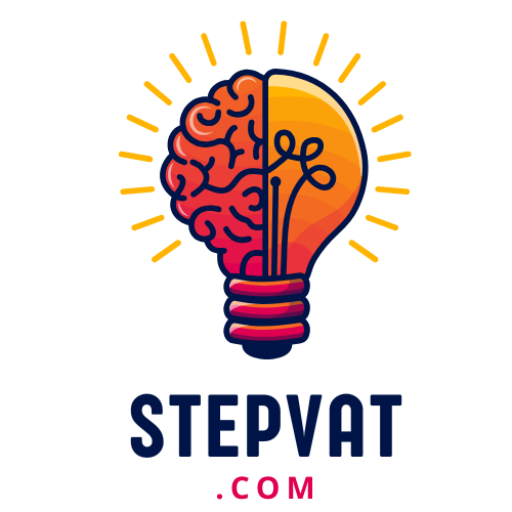Anuncios
Have you ever wondered how some candidates reach hiring managers before roles even appear?
Knowing which firms will hire next gives you a real edge. You’ll learn to read clear, early signals and use simple data points to act faster than public reports.
Economists call this type of communication signaling: visible actions that reveal intent when productivity isn’t directly known. Preference tools and credentials also help candidates stand out when employers can’t see skills up front.

We’ll show the difference between fast-moving indicators, like posting velocity, and slower ones, like payroll numbers. Aura’s July/August 2025 insights, for example, flagged cooling earlier than BLS data, which is why you should triangulate official reports with real-time platform activity.
By the end, you’ll have a simple playbook to spot, verify, and act on hiring intent so your outreach lands at the right time and in the right way.
Why Reading Job Market Signals Keeps You Ahead in Your U.S. Job Search
Catching early movement inside companies gives you an edge when outreach matters most. You learn to time contact, target active teams, and tailor messages so your outreach fits the employer’s window.
Real data matters. Aura’s August 2025 analysis showed the July BLS report with +73,000 nonfarm payrolls, 4.2% unemployment, and 62.2% participation. But prior months were revised down by 258,000 and long-term unemployment rose to 1.8 million.
Those revisions change the story. Political controversy around BLS leadership also reminded you not to rely on a single report. Instead, triangulate official reports with real-time labor intelligence and preference programs like APSA eJobs.
What this means for your timing, targeting, and outreach
You’ll time outreach to high-response windows: end-of-month posting waves or right after a public announcement. You’ll prioritize employers showing rising activity in roles and locations you care about.
- You’ll tailor each message to the observable cue—referencing a surge in requisitions or a new initiative.
- You’ll treat revisions and lags as features, pairing monthly reports with week-by-week data so your actions reflect what’s happening now.
- You’ll adjust expectations for years changed by the pandemic, valuing fresh, high-frequency indicators over old patterns.
“Triangulate BLS reports, platform activity, and company pages to build steadier momentum.”
From Theory to Practice: How Signaling Works in the Job Market
Spence’s 1973 model shows why education often serves as a costly signal when employers can’t observe ability directly.
Good workers obtain credentials at lower personal cost, so employers use education to separate applicants. This creates the so-called sheepskin effect, where a diploma can shift pay even if skills change little.
Spence, cost, and credential effects
When a credential is easier for high-ability candidates to get, it becomes informative. Employers infer higher productivity from that credential and adjust offers accordingly.
That dynamic explains why your education choices matter as strategic investments, not just learning experiences.
Preference signaling in specialized markets
Preference signaling helps you express interest to specific institutions without flooding every listing.
For example, APSA’s eJobs lets members send up to three confidential signals and a short message so departments see your interest alongside your CV. Programs like residency matching use similar tools to reduce congestion and improve coordination.
“Signals work best as complements to strong applications, cutting through crowded applicant pools.”
- You use education and credentials to reduce employer uncertainty.
- Costly signals separate applicants and shape wages.
- Preference tools like APSA eJobs give a targeted way to show interest.
The Big Picture: Interpreting U.S. job market signals from official data
Reading headline numbers without context can hide slower momentum beneath a positive print. The July 2025 jobs report showed +73,000 nonfarm payroll jobs, 4.2% unemployment, and 62.2% participation. Those figures look steady at first glance.
Dig deeper and the picture changes. May and June were revised down by 258,000 total, and long-term unemployed rose to 1.8 million. That combo implies softer demand than the headline number suggests.
Payrolls, unemployment, participation, and revisions
Always read payrolls with revisions in mind. Single-month gains can be misleading if prior months are adjusted downward. Use multi-month trends to avoid overreacting.
Reading sector gains and losses
Look at composition. Healthcare added 55,000 and social assistance added 18,000. At the same time, federal employment fell for the seventh month.
Claims, long-term unemployment, and employer behavior
Rising long-term unemployment and fresh claims change employer behavior. Firms may screen more tightly and lengthen hiring cycles when slack grows.
“Pair the official report with high-frequency data so you can adjust faster than the next revision window.”
- You’ll read payrolls alongside revisions to spot underlying weakening.
- You’ll use unemployment and participation with the number of long-term unemployed to judge slack.
- You’ll target sectors with real gains—healthcare and social assistance—while noting continued federal declines.
Beyond the Headlines: Real-time labor signals that move before reports
Real-time activity on platforms reveals employer intent sooner than monthly tallies. You can watch posting velocity and open-role duration shift days or weeks before public reports reflect change.

Read regional and sector patterns, not just national totals. Aura logged a 5% drop in North American job postings in July 2025, while Asia Pacific fell 26% and Europe 11%. MENA rose 5% and Sub-Saharan Africa jumped 15%.
States such as South Dakota, Wyoming, and Connecticut showed relative posting growth even as California and Texas slowed. Staffing and recruiting firms posted over 1.85 million new jobs—often a leading signal of hiring pipelines.
- Track velocity and time-to-fill: faster reposting usually means openings will close soon.
- Watch sector divergence: healthcare payrolls rose while new postings fell 7%—a classic backfill pattern.
- Monitor remote share: remote roles rose to 7.4% in July, with event services +445% and medical devices +21% pointing to new niches.
“Use month-over-month directional changes to adjust your outreach fast, then validate with a quick company page check.”
Company-level indicators that a business is about to hire
Spotting employer intent starts with company pages and external activity. When multiple roles appear in the same team at once, it’s a clear cue that an employer plans to expand headcount soon.
Surges, reposting, and requisition clusters
Surges in job postings or repeated refreshes on a careers page usually mean budget approval or revised requirements. If roles reopen quickly, prepare to move fast: screening and interviews can follow within days.
Third-party staffing as a near-term proxy
Look at staffing and recruiting services: Aura logged over 1.85 million new listings in July, showing intermediaries often drive openings. A spike in agency listings for one employer is a strong short-term proxy for scaling teams.
Investor updates, funding, and expansion language
Reads in earnings calls, funding announcements, or geographic expansion notes often mention headcount plans. When an investor deck names hires or growth targets, treat it as actionable intel.
Education partnerships and employer branding
New training tracks, campus roadshows, or partnership programs usually precede targeted hiring for specific skills. Employer branding moves—EVP campaigns or announced interview events—signal active recruitment rounds.
“Compare open-role counts to a company’s historical baseline to separate noise from real growth.”
- Compare counts: use historical baselines to judge whether growth is real.
- Pivot by sector: hospitality’s sharp posting gains versus healthcare declines guide where you apply.
- Act quickly: reposts and agency listings typically mean interviews are near.
Turn signals into action: Your playbook to spot, verify, and engage
Convert platform activity and official numbers into a practical routine you can use each week. Start by scanning a recent jobs report, then compare that headline to live posting trends and a company’s career page.

Triangulate data: treat the BLS report as one input. Pair monthly releases with real-time platform data and a quick company check to confirm openings are active.
Use preference signaling wisely
Where services such as APSA eJobs exist, send up to three targeted signals and add a 1–2 sentence note to show interest. Signals let institutions see your CV even if they aren’t using on-site interview services.
Time your outreach
Plan contact around end-of-month posting waves, the week after major revisions, and seasonal hiring peaks. Bundle a signal with a short, tailored note to the employer and reference the specific listing.
“Triangulate official reports with platform data so your outreach matches real intent.”
- Weekly workflow: scan directional posting changes, shortlist employers, and save source links for quick follow-up.
- Validate before you send: confirm roles remain active and fit your focus area.
- Measure and adjust: track response rates by institution and tweak timing by month and season.
Conclusión
Wrap the plan into a short weekly routine, pairing official reports with quick checks of company pages and live postings.
Keep one eye on broad labor trends and one on company activity. That balance helps you spot real demand and avoid chasing noise.
Use credible signals—education credentials and targeted tools like APSA eJobs—to reduce employer uncertainty. Act fast when postings reappear or staffing listings spike.
Close each week with a brief recap: what the data said, which employers you contacted, and your next steps. Small, steady follow‑through builds momentum across months and years.
Preguntas frecuentes
How can you spot companies that are likely to hire soon?
Look for a combination of signals: surges in postings on real-time platforms, repeated reposting of the same roles, and a rise in requisitions within company career pages. Watch for third-party recruiting firms or staffing agencies actively advertising roles for a firm, and check investor updates or funding news that mention expansion. These clues together give a clearer picture than any single data point.
Why does reading labor indicators help your U.S. job search timing and outreach?
Official data and faster sources help you choose when to apply and whom to target. Payrolls, participation rates, and monthly revisions show broad demand trends, while posting velocity and sector gains highlight where hiring is concentrated. That lets you tailor applications and reach out when employers are most receptive.
What do “signals” mean for your timing, targeting, and outreach?
Signals guide when to act and where to focus your effort. Early indicators like open-role duration shortening or spikes in postings suggest immediate need. Sector and regional divergence tell you which industries or states are adding roles. Use that insight to prioritize employers, customize your message, and time follow-ups around posting waves and month-end cycles.
How have past cycles and the pandemic changed the importance of revisions in reports?
The pandemic made monthly revisions and retroactive corrections more common, so single releases can mislead. Looking at revised payroll figures, unemployment trends, and multi-month averages reduces noise. That helps you avoid overreacting to one report and improves your strategic timing.
What is Spence’s signaling theory and how does education play a role?
Spence’s theory says credentials signal applicant productivity to employers. For you, relevant degrees, certifications, or training act as credible signals that lower employer uncertainty and hiring cost. Choose credentials that match employer preferences to improve callbacks and offers.
How does preference signaling work in specialized application systems?
In platforms like APSA eJobs or medical residency portals, pref signaling lets you indicate top choices to employers. Use those limited signals strategically for roles that are a strong fit; it raises your visibility and can sway recruiters when many qualified applicants apply.
Which official indicators best reflect broad hiring trends?
Watch payrolls, unemployment, and labor force participation for the overall picture. Jobs report revisions and long-term unemployment trends help you understand demand persistence. These measures reveal whether gains are across sectors or concentrated in a few areas.
How should you read sector gains and losses such as healthcare, hospitality, or government payrolls?
Compare sector hires month to month and against longer averages. Rapid hiring in healthcare or hospitality signals sustained demand and may mean more entry points. Government payroll shifts often reflect policy and budgeting cycles, so use them to anticipate contract and public-sector openings.
What role do claims and long-term unemployment play in employer behavior?
Rising initial claims suggest near-term layoffs, while high long-term unemployment can give employers more candidate leverage and extend hiring timelines. Employers may slow hiring when claims spike, but targeted skill shortages can keep demand steady in certain areas.
Which real-time labor signals tend to move before official reports?
Job posting velocity, changes in open-role duration, and spikes in recruiter outreach often lead official releases. Regional staffing surges and sudden increases in remote-role listings also flag shifts faster than monthly data can capture.
How does regional and industry divergence affect where you apply?
Demand can vary widely by state and sector. If a region shows staffing spikes or a sector posts sustained gains, you’ll find more opportunities and faster hiring. Focus on those pockets to increase interview frequency and negotiate better terms.
Why does the share of remote work matter as a signal of demand and job design?
A stable or growing remote share indicates employers are adjusting roles and workplace design to attract talent. That opens options for broader geographic searches and suggests firms are investing in flexible work arrangements to fill roles.
What company-level signs reliably indicate imminent hiring?
Look for repeated reposting patterns, sudden increases in open requisitions, and coordination with staffing agencies. Funding announcements, expansion plans, or public investor comments about growth often precede new hires. Partnerships with colleges or ramped-up training programs also signal upcoming demand.
How can staffing and recruiting activity serve as a proxy for near-term hiring?
When firms engage third-party recruiters or staffing firms, they’re often trying to move quickly. Active sourcing on LinkedIn, recruitment ads from agencies, and multiple contractors working on roles are strong proxies that hiring is imminent.
What employer signals come from education partnerships and branding efforts?
New apprenticeship programs, campus recruiting events, and employer-sponsored training indicate plans to scale talent pipelines. Strong employer branding campaigns can precede hiring pushes as companies work to attract and convert applicants.
How do you triangulate data across BLS reports, real-time platforms, and company pages?
Use BLS and official releases for trend context, then validate with real-time posting trends and company career pages to confirm timing and scale. Cross-check recruiter activity and funding news to improve confidence before you invest in targeted outreach.
How should you use preference signaling tools to stand out?
Reserve preference signals for roles that truly match your skills and goals. Pair a signal with a tailored application and a concise outreach message that explains fit. That combination increases your chances of being noticed among many applicants.
When is the best time to reach out to employers based on revisions and posting cycles?
Aim for posting waves at month-end and after major report revisions when employers often replenish roles. Early in the posting life cycle is best—respond quickly to new listings and follow up one to two weeks after application if you haven’t heard back.
How do seasonal trends affect your search and outreach strategy?
Hiring often peaks at predictable times—early in the year, late summer, and before fiscal year starts for public employers. Align your outreach to these windows while watching sector-specific cycles, such as retail before holidays or healthcare ahead of flu season.



